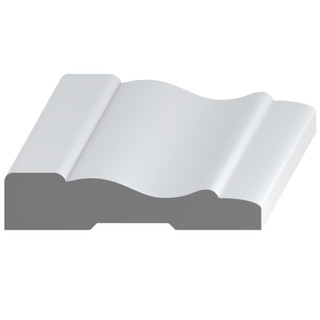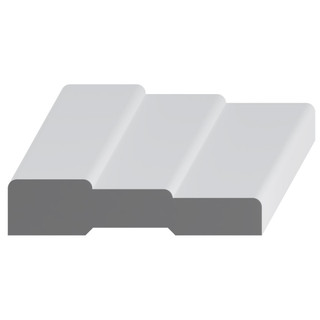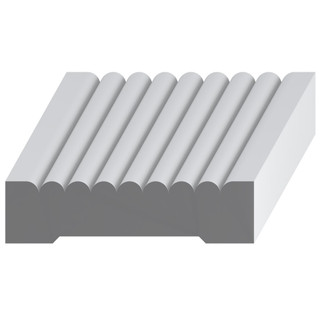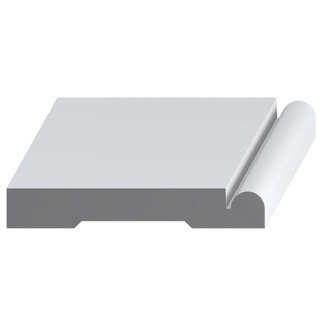Designing Down to the Details: How Door Casings Can Add Visual Interest in a Space
12th May 2025
Are you the kind of person who is always looking for unique ways to add interest to your interior design? Creating a custom look is easier than you may realize. Door casings give doorways a finished look, but in the right hands, they are capable of so much more. Casings can be used for easy DIY projects that add high-end style to any room.
What Are Doorway Casings?
Many types of trims and mouldings are used to give a home a finished look. Like many kinds of trim, doorway casings serve both practical and aesthetic functions. Traditionally, casings were made from natural materials, and wood is still the preferred choice. Wood is durable, and it can be painted or stained.
The term “doorway casing” refers to the two vertical strips of wood at the sides of the door and the horizontal header at the top of the door’s opening. These three strips of material surround the door to conceal gaps between the drywall and the frame and to add a sense of style.
Doorway casings can be simple or ornate. They can also be used creatively to add architectural interest in a room where none existed before.

Choose Your Look
Door casings are available in many styles with dozens of examples within each category. The hardest part of your project could be choosing which casings to use. To keep things simple, start with a general category and select your favorite looks from within that grouping.
Colonial
Colonial casing is a standard in homes across the United States. It is an unadorned but refined style with neatly mitered corners that provide a period look. Colonial-style casings are typical in homes with a traditional style.
Fluted and Reeded
Fluted and reeded door casings are often used with plinth and rosette blocks to help create a pleasing symmetry. Fluted moldings have long “flute-shaped” raised bars, and reeded moldings have mirroring inverted shapes. Fluted and reeded casings are chosen for their clean, proportional aesthetic.
Stepped
Stepped casings were popularized in the Art Deco period. The geometrical layered look for stepped trim is still popular today. Homeowners and designers appreciate the finished look that stepped casing brings to doors and windows. Combining two or three styles of step casing can create a unique statement that sets your home apart.
Streamlined Modern
The name of this style says it all. Streamlined modern door casings are perfect for contemporary decor. The look is minimal and clean and adds visual impact while honoring the integrity of simple design.
Symmetric
Symmetric door casings are versatile and complement both modern and classic design. Their neo-classic features make them perfect for homeowners who prefer a balanced, symmetrical aesthetic.
Beaded
Beaded door casings are simple enough to fit into a range of styles. They typically have a rounded or “beaded” edge at the top or bottom of the casing. Some examples have multiple rows of beading. Beaded casings can be combined to create eye-catching trim that makes a statement.
Choose Your Project
There are many creative ways to use door casings for visual appeal. For example, you can mix and match different styles or combine variations in one category to create a one-of-a-kind casing that will transform a doorway into a grand entrance. When it comes to creating visual interest with door casings, your imagination really is your only limit.
Coordinate With Paint
Paint is an inexpensive way to add pop to any room. While you can use bright or trendy colors on door casings, it’s not necessary to go outside of your color comfort zone to make a statement.
Consider using a bold color that contrasts with the wall paint to highlight the details in your door casing. If you like the idea of contrast but bold color doesn’t suit your style, experiment with different paint sheens. Glossy door casings will stand out against a matte wall even if everything is the same color.
You might also paint the door casings, window casings, crown moulding, and other trim all one color to unify the look from room to room.
Accent With a Decorative Border
Surrounding door casings with a decorative accent will ensure they get noticed. A hand-painted or wallpaper border around the door casing adds whimsical detail and sets the tone for the entire room.
Adding a border is also a great way to exert your style without repainting an entire room. Keep border details simple and bold for maximum impact.
Let Trim Work Be the Star
Who says wall color always has to be the first consideration in room decor? Let your door casings and other trim pieces steal the show for an architectural look. Choose chunky trim pieces or combine smaller pieces to create the look you prefer.
To keep the look cohesive, use the same width of trim throughout the space. For example, if your door casings are six inches wide, keep crown moulding, baseboards, window casing, and other pieces uniform.
Keep a Low Profile
Sometimes, a whisper gets the most attention. Standard-sized door trims are functional, but they don’t add much to a room’s aesthetic. If you prefer a minimalist look, use narrow door casings and other trim pieces to enhance your simple style. Paint or stain the door casings to match the door for a designer look.
Skipping unnecessary trim like crown moulding and keeping wall color simple will help your doorways stand out as true design elements.
Find Inspirational Door Casings at MouldingsOne
Door casings provide an important function, but they can also be a highlight in your design. Whether you prefer the visual feast of maximalism, the familiar comfort of traditional style, or the serenity of minimalist design, door casings can help you add interest to your home.
MouldingsOne has hundreds of real wood casings to choose from, including paintable, stainable, and hardwood casings. Contact us to learn more about our options or to receive a free, no-obligation estimate for your next project.









